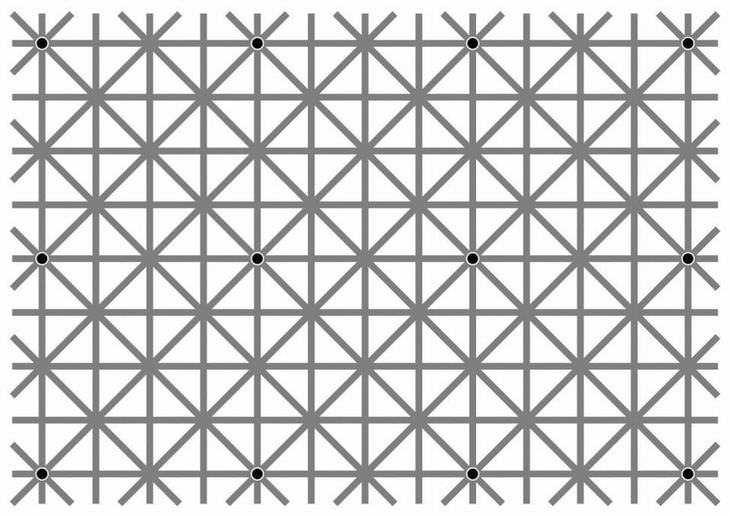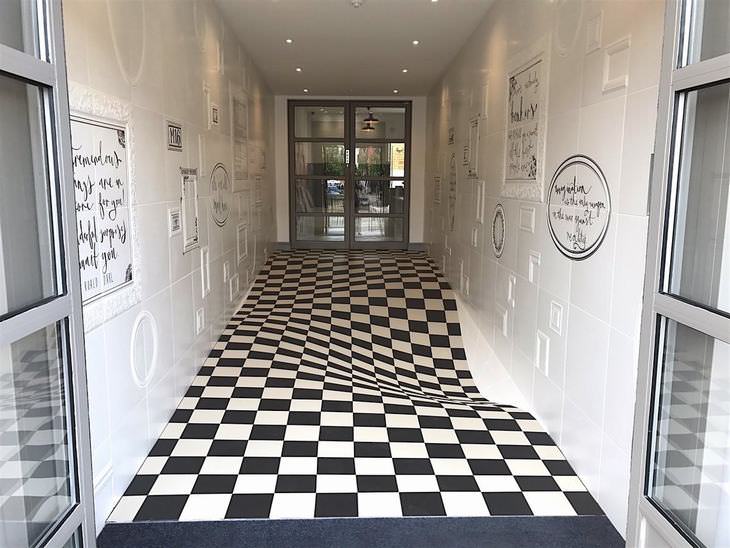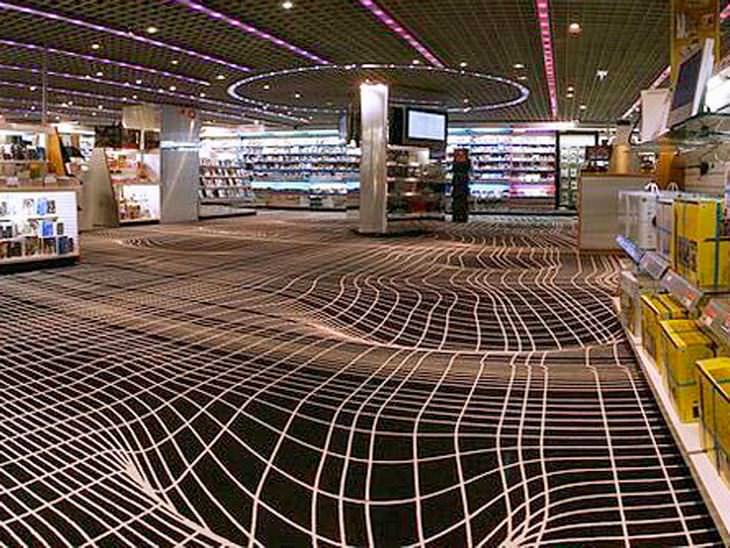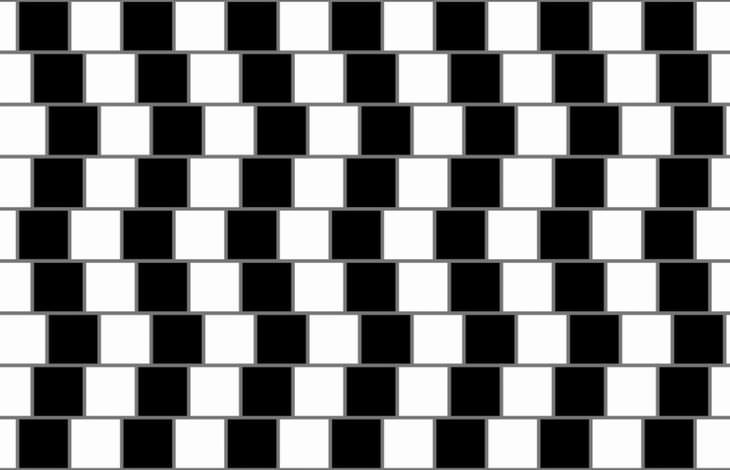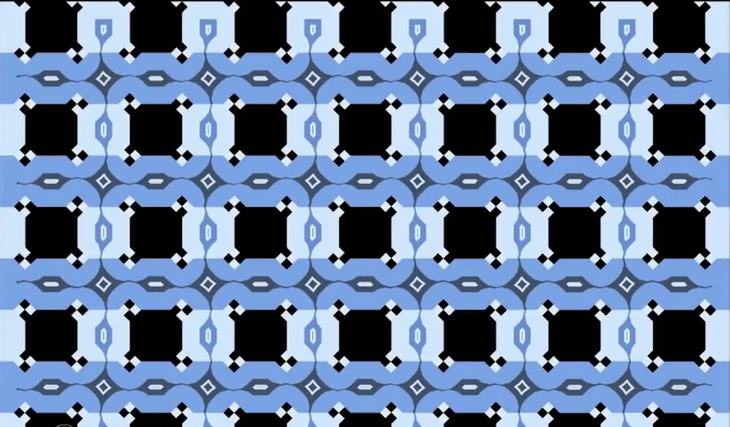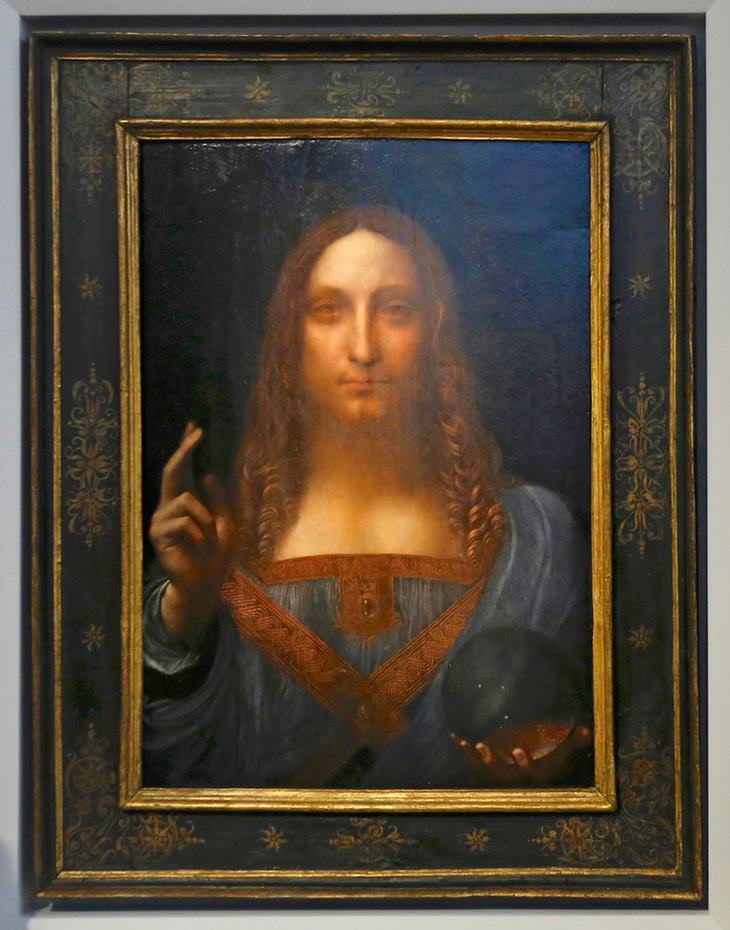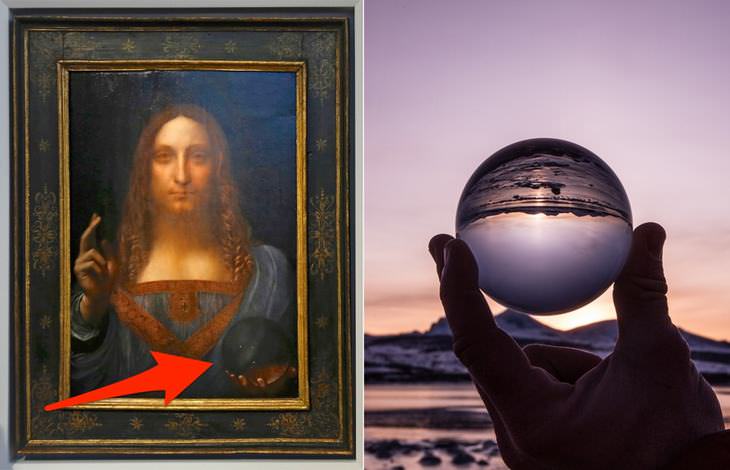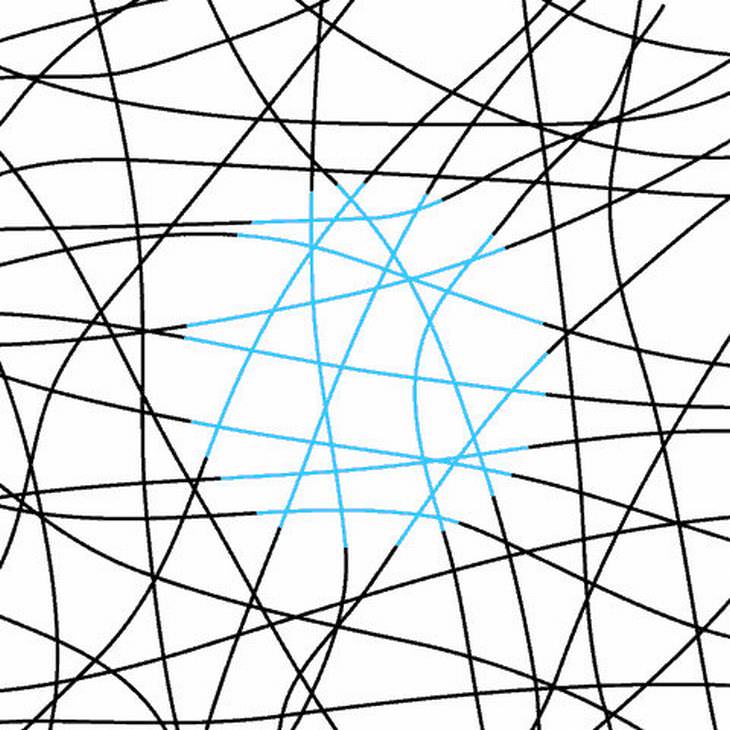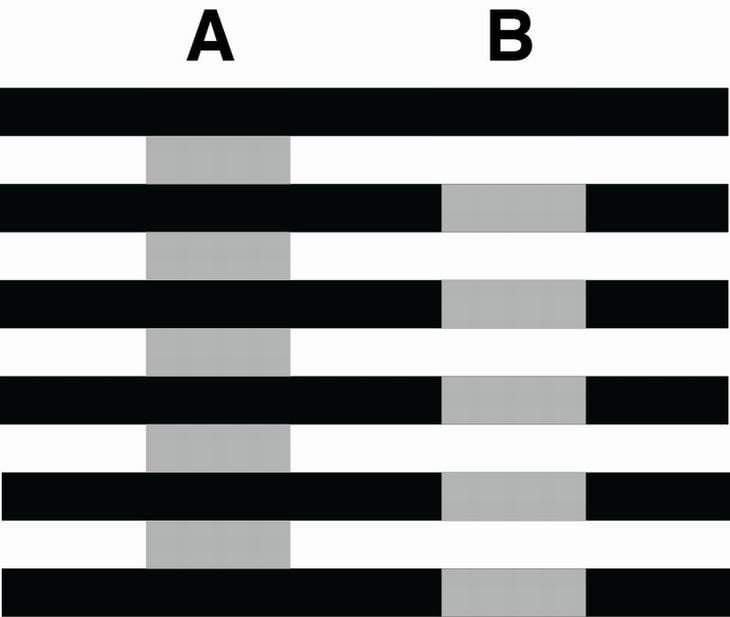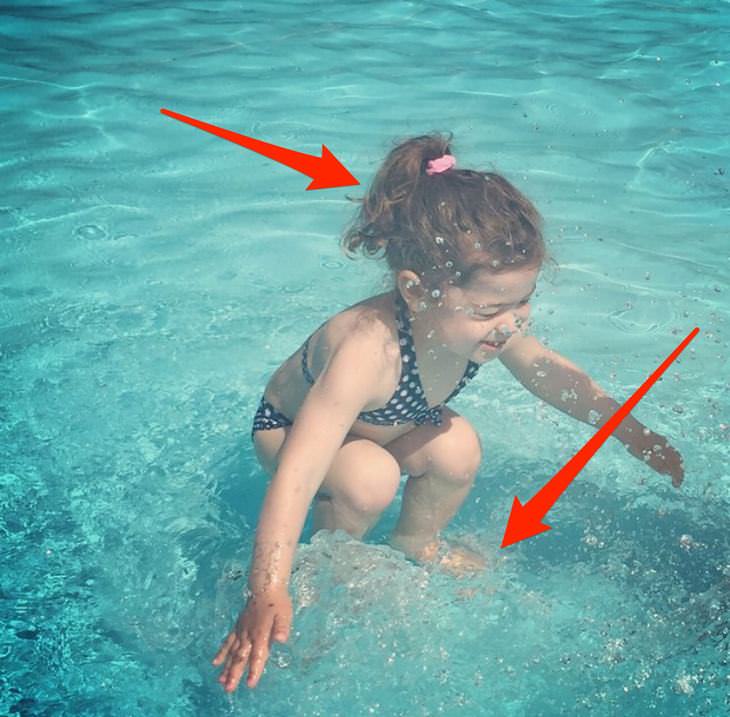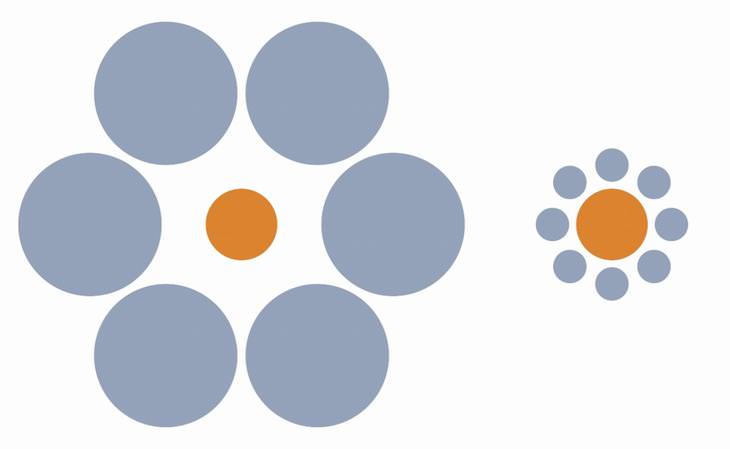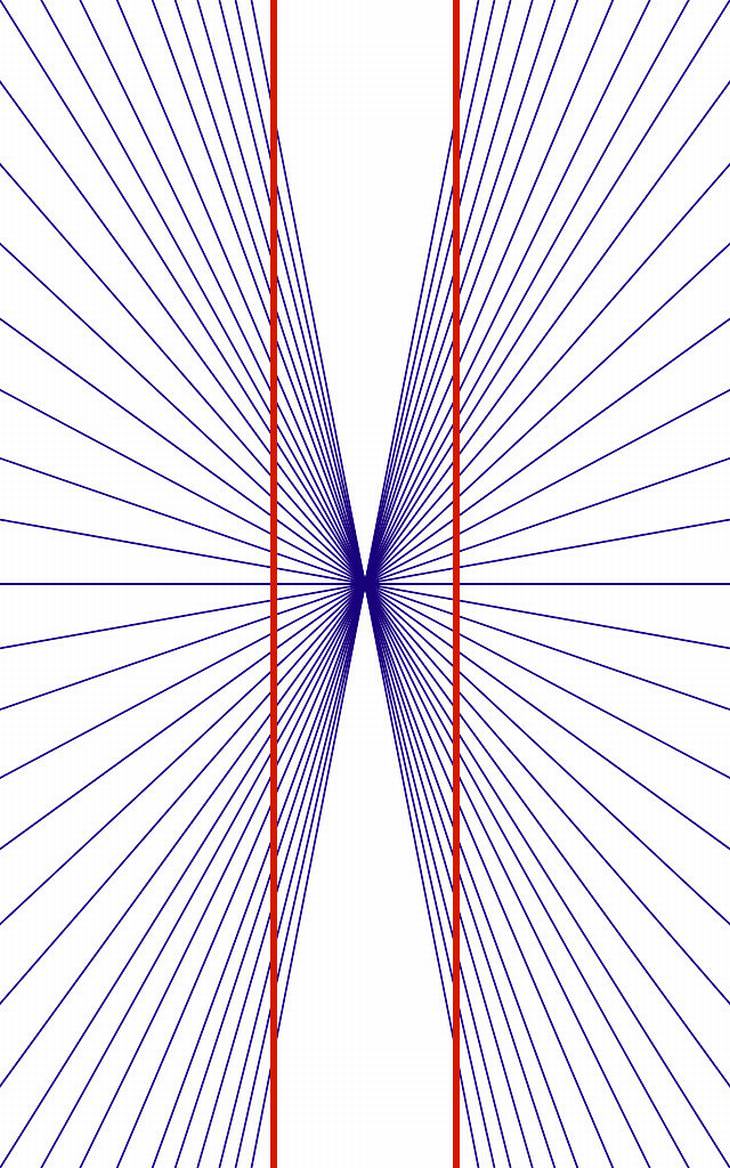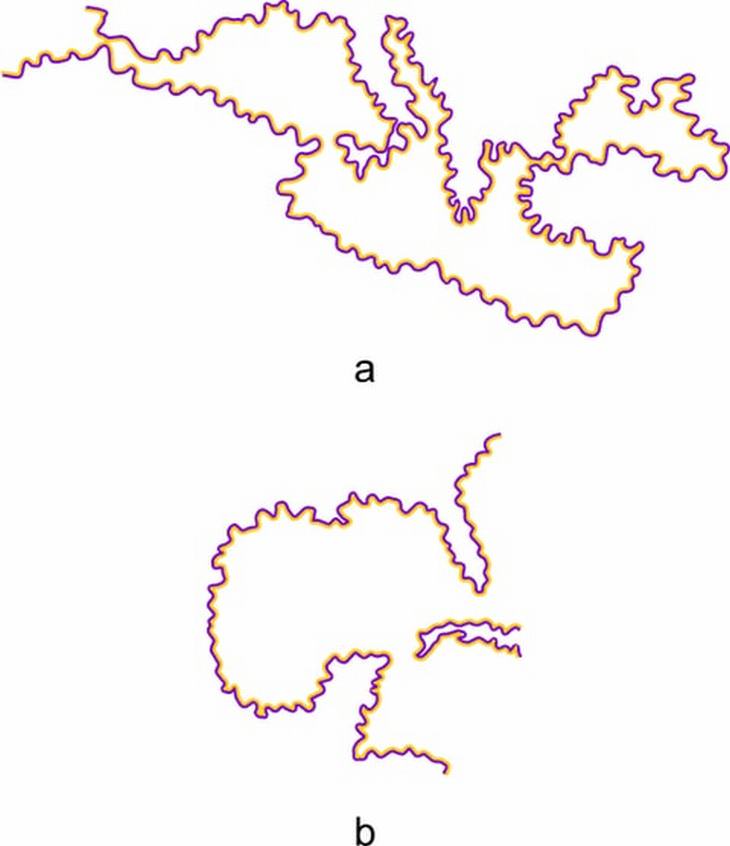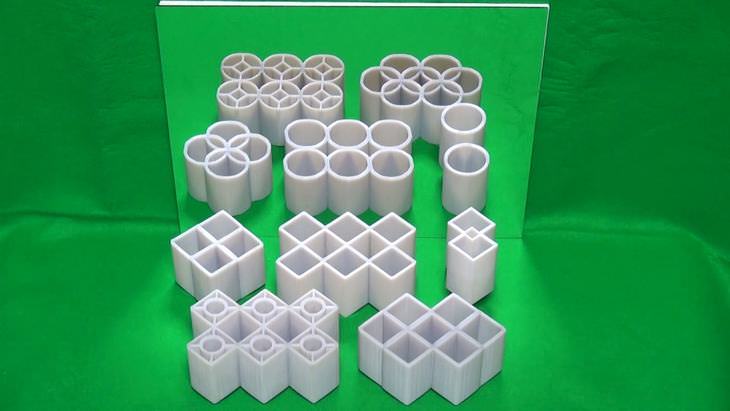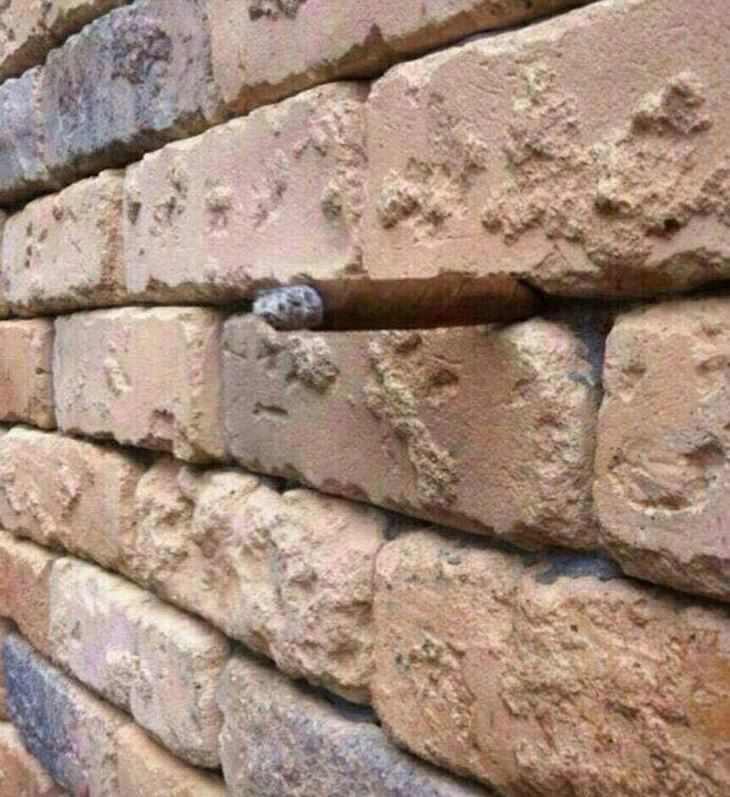1. Is this dresser blue and gray, or pink and white?
The dresser is actually blue and gray in real life, but the reddish lighting makes the unsaturated parts of the photo appear pink.
2. This is a perfectly normal newspaper... or is it?
Look at the photo below - there's a hidden 3D kitchen in there.
3. The photo below is NOT animated...
This image is inspired by "Rotating Snakes", an illusion created by psychologist Akiyoshi Kitaoka in 2003. It is what's known as a "peripheral drift illusion".
4. Is this cat going up or down the stairs?
The internet was on fire over this one, but the most convincing explanations were from people who believed that the cat was going down the stairs.
5. What's going on with this guy's shorts?
Although it looks like you can see through to what the woman is wearing, it's actually the man's shorts that are visible - they're white on the inside and black on the outside. Take a look at the outline below:
6. Are tiles A and B on the checkerboard the same color, or not?
The answer is yes, they are the same color. It's called the checker shadow illusion, and was first published in 1995 by a professor of vision science at MIT. Seeing as our brains are constantly comparing colors, square B looks lighter than it actually is thanks to being surrounded by darker squares and covered by a shadow.
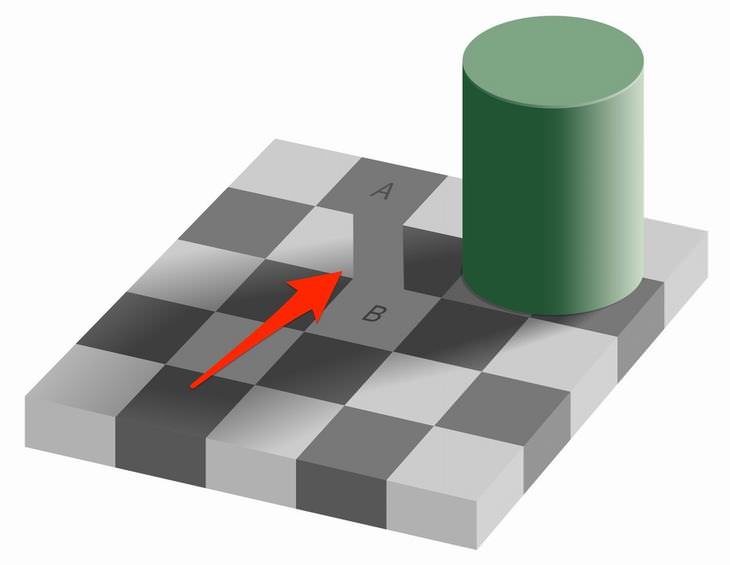 7. These strawberries are red... or are they?
7. These strawberries are red... or are they? The above is yet another illusion created by Japanese psychologist and professor, Akiyoshi Kitaoka. Although the color red has been completely removed from the above image, the brain actually knows that an object's color is more useful to perception than the color of a light source. As a result, seeing as the mind recognizes that strawberries are in fact red, it color-corrects the gray and green pixels in the image to appear red.
8. Can you see how many black dots there are in the image below?
This illusion was first published in 2000 by Jacques Ninio and Kent A. Stevens. The image actually features no less than 12 black dots, but you can't see them all at once. You can focus on one and see it clearly enough, but the dots on the periphery of your vision seem to appear and disappear when you do so.
9. What's up with this floor?
UK-based tile company, Casa Ceramica, recently uploaded a picture of this floor, which looks wavy but actually isn't. It's located at the entrance to one of it showrooms, and it's designed to stop people from running in the hallways. What's more is that the illusion disappears when viewed from the opposite perspective.
10. More dents in the floor, or not?
Nope, no dents. Just another clever optical illusion. The carpet's designer added large spaces between some lines to add depth and make the carpet look like it has craters in it.
11. Are the horizontal lines in the image below parallel to each other or not?
This famous illusion, known as the cafe wall illusion, dates back to the 1800s. All of the horizontal lines are in fact parallel to each other. Another example of the cafe wall illusion can be seen in the image below:
Take a look at what happens when all of the lines are blurred - you can see that all of the lines are actually perpendicular and parallel to each other.
12. Look at the reflection in the orb that Christ is holding. Something's not right...
Solid glass or crystal orbs produce magnified, inverted and reversed images, but Leonardo da Vinci decided to paint the orb that Christ is holding in the painting as if it was a hollow glass bubble that doesn't refract or distort light. It's a strange choice that da Vinci made in the context of his scientifically-accurate depictions of light, however some speculate that the world-famous polymath painted in this way deliberately in order to highlight Christ's divinity. Take a look to see how light is distorted and refracted in an orb in the image below:
13. Is there a light blue circle in this image or not?
The answer is no, there isn't. The background is completely white, but the positioning of the neon-colored lines makes it looks like there is. This illusion is known as neon color spreading, and it was first documented back in 1971. More than 40 years later, it isn't quite known what causes this perception phenomenon.
14. Are the gray boxes in rows A and B the same color or not?
The answer is yes, they're the same color. Known as White's Illusion, this famous effect was discovered in 1979 by an Australian psychologist named Michael White. Various theories have been proposed as to why this illusion occurs.
15. This little girl looks like she's underwater, but...
...there are two things that give away the fact that she's not. The first is that her hair is completely dry and not floating in the water, and the second is that the "air bubbles" are actually just drops of water splashing everywhere.
16. The orange circles below: Same size or not?
Yep. They're the same size. This optical illusion, known as the Ebbinghaus illusion or the Titchener circles, was discovered by German psychologist Hermann Ebbinghaus and popularized by British psychologist Edward B. Titchener. It illustrates how the brain uses context to determine the size of objects. In other words, the size of the blue circles surrounding the orange circle on the left make it look smaller, whereas the size of blue circles surrounding the orange circle on the right make it look larger.
17. Are the red lines below curved or not?
The red lines are completely straight. They just appear not to be due to the positioning and frequency of the blue lines. Known as the Hering illusion, this illusion was first discovered by Ewald Hering in 1861.
18. Do the middle of these abstract shapes have a tint or not?
The answer is no, there's no tint whatsoever. It appears that way because of the effect of seeing a thin, brightly-colored line that's surrounded by a thin, darker-colored line. The illusion was discovered by Baingio Pinna back in 1987. It's known as the watercolor illusion.
19. Is this an actual mirror image or not?
Yes, it is. This amazing illusion, which was created by Meiji University's professor Kokichi Sugihara, actually won a "Best Illusion of the Year" award in 2016. Named the Ambiguous Cylinder Illusion, it involves using a series of cylinders that are shaped somewhere between a circle and a square. If they're positioned just right in front of a mirror, the illusion that's created is of square shapes reflecting as circles.
20. Is there something odd about the photo below?
Although it looks like just a gap in the wall with a gray stone in it, there's actually a cigar lurking in this photo. Can you see it? Take a look at the image below:

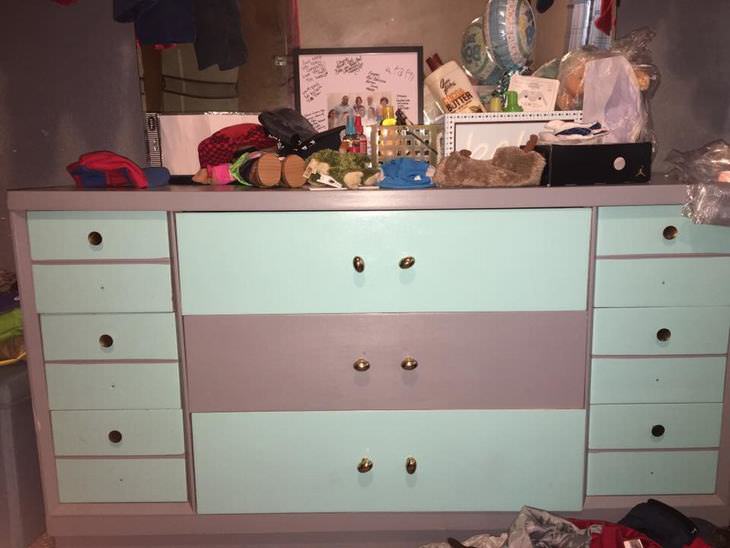
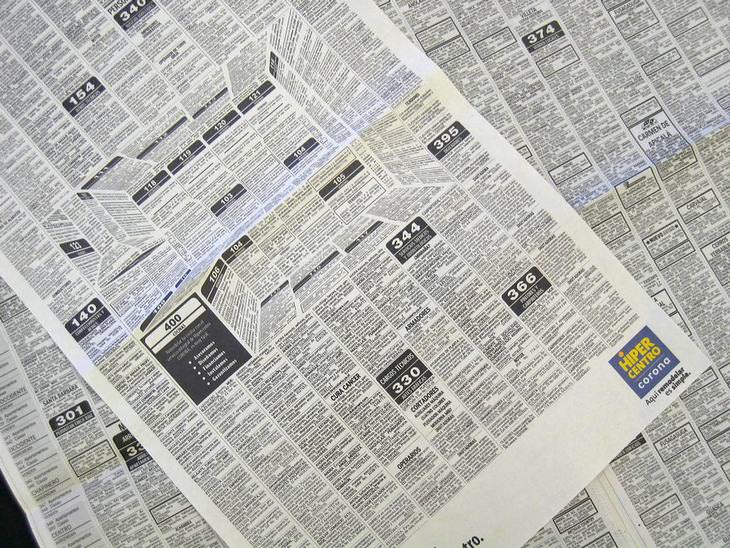

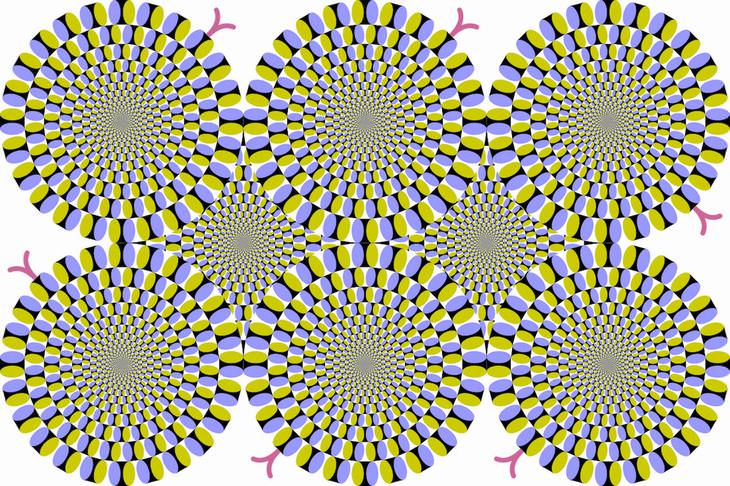
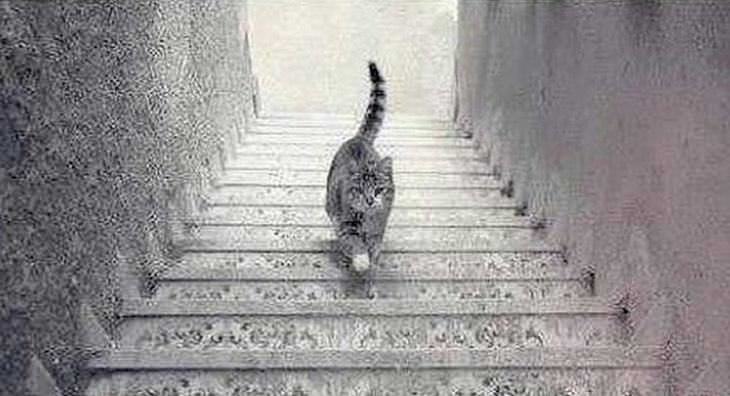


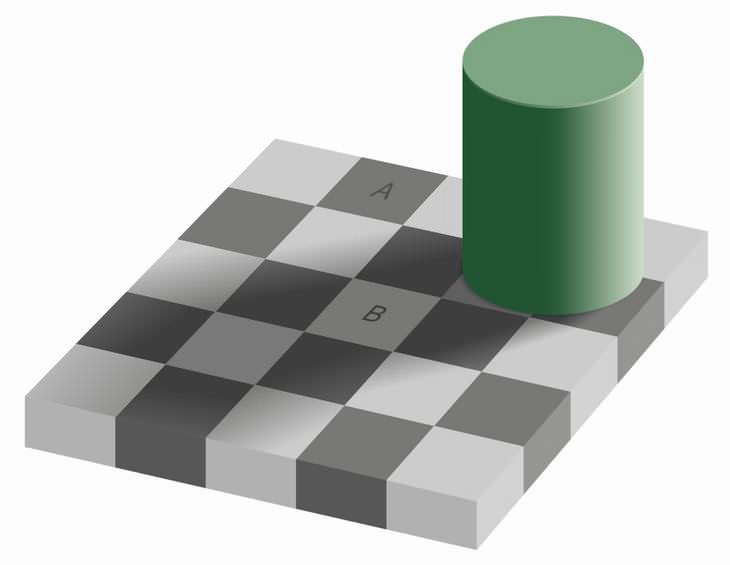
 7. These strawberries are red... or are they?
7. These strawberries are red... or are they? 
